Wood Flooring Types
Before installing a wood floor, it is important to know about the available wood flooring types. Learning about the pros, cons, cost, and design options available for: laminate, solid hardwood, engineered hardwood, bamboo, and cork will help ensure the right floor is selected for the project.
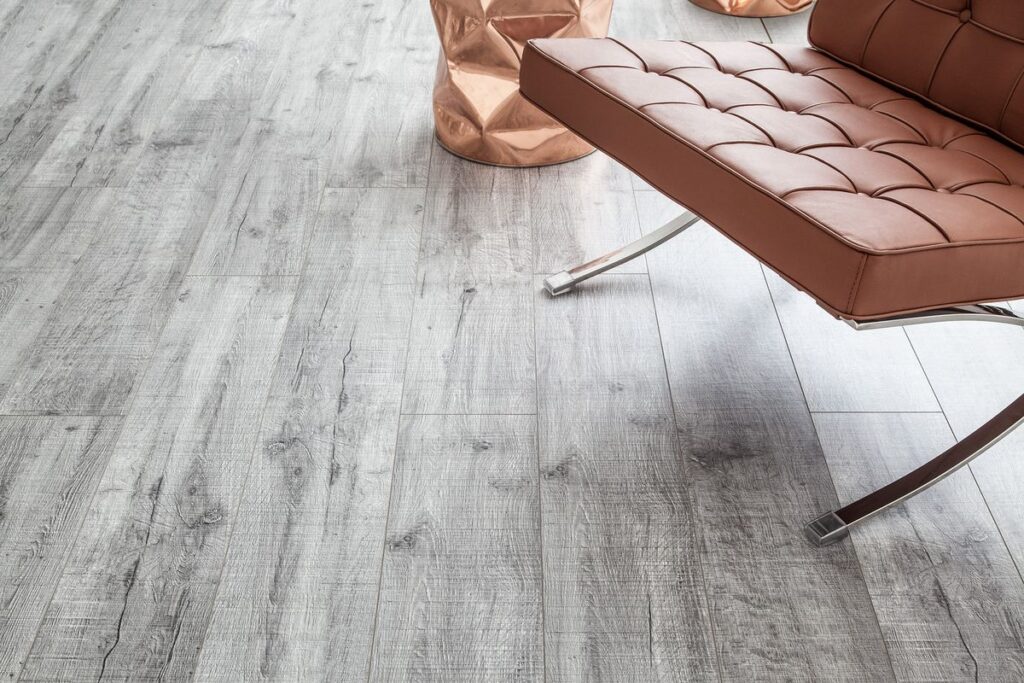
Laminate
Laminate flooring is made by compressing layers of fiberboard together and placing a photographic image of wood grain, stone, or tile pattern over the fiberboard. After the image is added to the surface, a protective coating is added to help prevent damage and add a finish to the flooring.
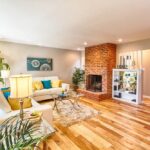
It is a cost effective option that will withstand a certain amount of wear. For an easy installation, opt for click-lock. The planks will snap together and can be laid over other flooring. Also, ideal for living areas, and some brands may even construct it with a waterproof core, allowing it to be used in areas where water may be an issue. We suggest taking a close look at the guarantee before installing it in a bathroom.
Top quality laminate will not match the look and feel of real wood floors. The areas where the planks join will wear considerably over time, and when damage sets in, it is not an easy repair. The moisture damages Laminate easily, and when that damage sets in, it cannot be fixed. If the laminate is not laid correctly, it will not be appealing to potential renters or buyers.
Depending on the brand and style, laminate will range anywhere from $0.50 to $6 per sq ft. There is a variety of styles to match any decor in laminate. High quality laminate may even feature images of knots and other characteristics of natural wood.
Solid Hardwood
Solid hardwood floor planks are made from a piece of wood and made to be anywhere from 18 to 20 mm thick. The boards are made with a tongue and groove to fit together for installation. Depending on the species of wood, certain floors will be harder than others. The harder the floor, the less susceptible it is to dings and scratches. The floor can be sanded and refinished several times to restore its beauty, with the total number of times being determined by the depth of the tongue from the top of the plank.
Solid hardwood is an excellent way to add visual appeal to a home or business. It will also potentially add value to a home or business in the event it gets put on the market later.
Solid hardwood will swell in moist conditions and contract as the area dries. The change of shape can alter the appearance of the floor and cause problems. Installation is a complex process, and for the best appearance must be done with great care. This is the most expensive option for those shopping for wood floors.
Prices will vary depending on the species of wood and the cost of the raw form.
Engineered Hardwood
Engineered hardwood is made using three to four layers of wood glued together to produce a 14 mm thick plank. A real wood surface about 4 mm in thickness is applied to the top to allow it to be sanded and refinished a certain number of times to remove signs of damage, wear, and tear.
Engineered hardwood construction produces a more stable product. The greater stability means it is less prone to changes from temperature and humidity conditions in the room. This type of flooring is more attractive than a laminate floor, but it is also less expensive than solid hardwood floors.
Depending on the style and brand, engineered hardwood floors will range anywhere from $2 to $11 per square foot. Engineered hardwood floors come in a variety of styles to match any decor.
Bamboo
Bamboo floors come from bamboo grass stalks prominent in Asia. The floors are produced in China, and come in a variety of styles and finishes to suit various decor options. Since it is a tropical grass as opposed to wood for trees, it is naturally resistant to moisture. The flooring is produced by pressing fibers together under high pressure.
Not only is bamboo resistant to moisture, but it is environmentally friendly and an optimal choice for those who are looking to build “green.” The plant grows faster and does not take as long to re-grow than a typical hardwood tree, therefore not contributing to deforestation. Bamboo flooring is softer than traditional hardwoods, so it will not cause pain if it is stood on for long periods of time. The softness of the floor will also reduce noise.
The downfalls to bamboo are the cost and its brittle state. Despite the fact that it is a durable type of flooring, it is more susceptible to dings and scratches than other wood floors. Due to the cost of importing from China and the care which must be taken during installation, it is a much more expensive option than traditional hardwood.
The cost for bamboo floors ranges anywhere from $2 to $8 per square foot.
Cork
Cork floors come for the harvest of the cork oak tree bark. These trees are widely grown in: Spain, Portugal, Algeria, Italy, Morocco, and Tunisia.
One of the best things about cork floors is that they are environmentally friendly because cork is a sustainable and renewable resource. The natural beauty of the material can suite any decor. The structure of the cork allows for a natural comfort and softness to absorb shock. This is why use of c𝘰rk flooring is a good application in areas where people will be on their feet for extended periods of time. Using cork floors will reduce noise from traffic or dropping items, also because of the structure of the cork material. The natural properties of the material make it healthy because it is not only resistant to insects, but it is hypo-allergenic.
One of the drawbacks of cork flooring is the cost. It is more expensive than other wood flooring options. The cost of import, plus material, plus installation is more than many budgets can handle. Due to the soft nature of the flooring, it is easily damaged by furniture and shoes, but it can and should be protected just like any other type of wood floor.
Cork flooring costs start at $3 for tiles. The price increases when it comes to planks and stains.
Knowing more about the characteristics of these types of wood floors will make the choice for any project a much easier one. Make sure to choose the best one for your own budget, location, and decor.

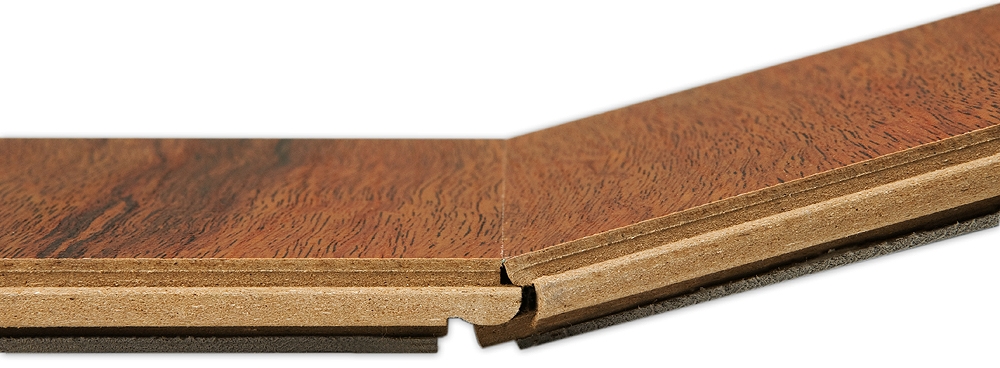
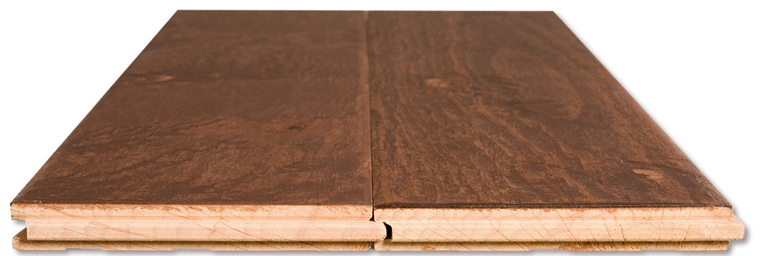
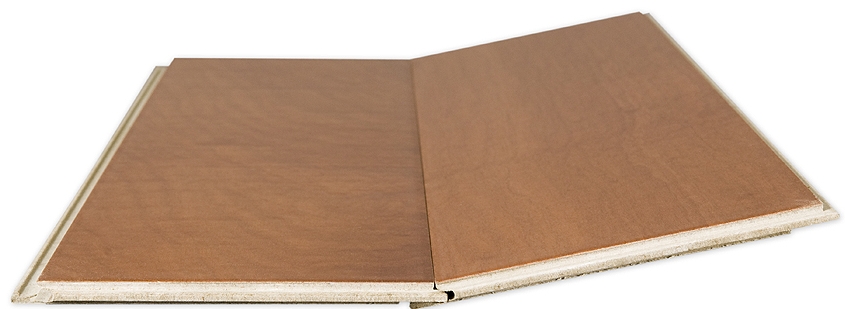
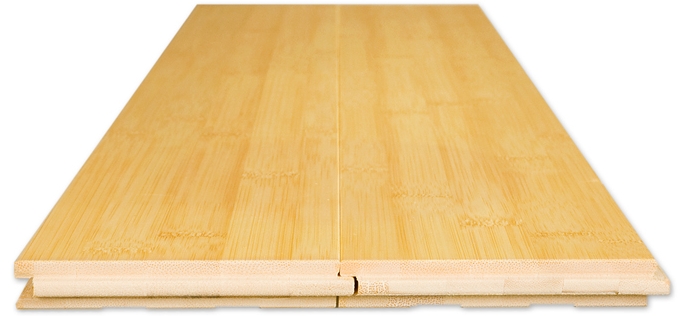
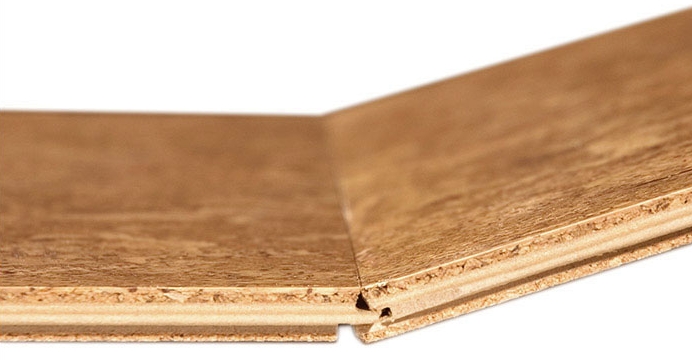



Pingback: Understanding Types of Hardwood Flooring
Pingback: Cultured corners | eegbusiness
Delores Long
What is the best type of wood to use on a cement slab for kitchen & hallway?
Thanks,
dlong
Ron
I installed Bruce lock & fold engineered wood free floating flooring in my kitchen and extended it out to match my entryway. The kitchen space I glued all seams to prevent any spill damage, the rest was not glued. I noticed that the free floating non-glued area where the ends of the planks joined got very small, but noticeable, gaps when direct sunlight fell on part of the floor. I pulled the floating section back up and glued the ends of each plank to it’s neighbor. I did the same thing when I installed this in my dining room and it has worked very well and looks beautiful. It was a very easy project and quiet to walk on. I used a 1/8″ foam/Mylar underlay for a vapor barrier.
Sharon Mork
Can you help me with choosing a wood flooring for my at home office?
Vickie
I had a salesman today try to sell me compressed Shaw flooring. He said it is real wood, not laminate, and is more durable than the other types of wood flooring. Any advice?
Marlene Moore
What is the best wood flooring for a bathroom?
Pauline
Can you please direct me to a good resource (website preferably) that will provide adequate, dependable facts about the history of wood flooring?
Alan R Holbrook
I have a question more than a comment. I live in Southern California where termites abound. I already have oak flooring over a concrete slab floor with no moisture barrier. I know what a pro would say, however it’s been that way since the house was built in 1947. My problem is not wood movement rather it’s termites. They apparently built the houses in a walnut grove after cutting the trees down and grinding in the roots. I have been reading that termites hate cork and so thought that maybe a 1/4″ layer of cork on top of vapor barrier and plywood might be a way to go.
Any thoughts?
Ronald Hart
Great write up on the different types of flooring. When putting in new flooring it is important to think about how much traffic it is going to receive, the climate that you live in, and your budget. All three of these variables will help you determine which flooring might be best. Also, installing your own flooring can save a significant amount of money.